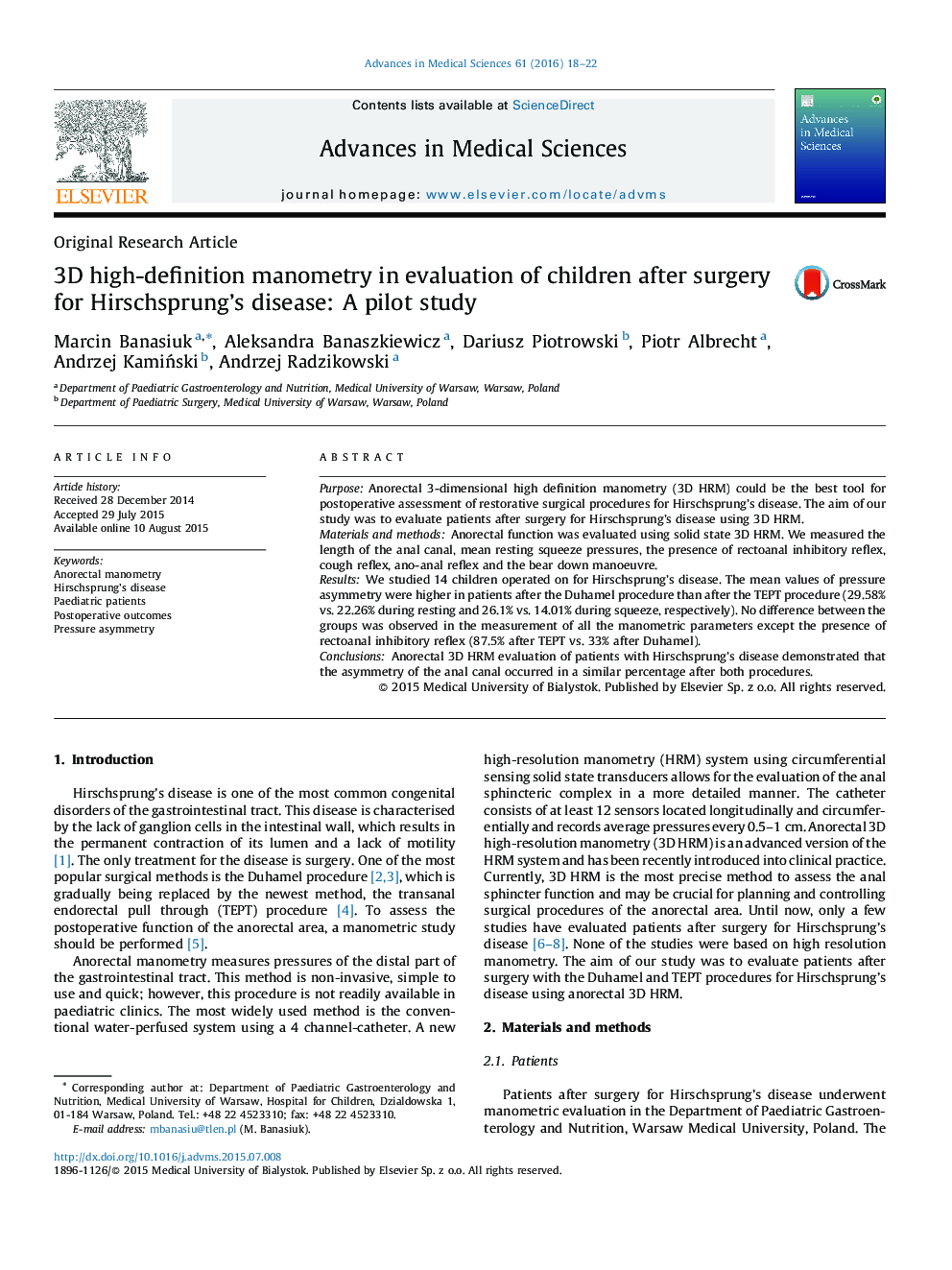| Article ID | Journal | Published Year | Pages | File Type |
|---|---|---|---|---|
| 2031968 | Advances in Medical Sciences | 2016 | 5 Pages |
PurposeAnorectal 3-dimensional high definition manometry (3D HRM) could be the best tool for postoperative assessment of restorative surgical procedures for Hirschsprung's disease. The aim of our study was to evaluate patients after surgery for Hirschsprung's disease using 3D HRM.Materials and methodsAnorectal function was evaluated using solid state 3D HRM. We measured the length of the anal canal, mean resting squeeze pressures, the presence of rectoanal inhibitory reflex, cough reflex, ano-anal reflex and the bear down manoeuvre.ResultsWe studied 14 children operated on for Hirschsprung's disease. The mean values of pressure asymmetry were higher in patients after the Duhamel procedure than after the TEPT procedure (29.58% vs. 22.26% during resting and 26.1% vs. 14.01% during squeeze, respectively). No difference between the groups was observed in the measurement of all the manometric parameters except the presence of rectoanal inhibitory reflex (87.5% after TEPT vs. 33% after Duhamel).ConclusionsAnorectal 3D HRM evaluation of patients with Hirschsprung's disease demonstrated that the asymmetry of the anal canal occurred in a similar percentage after both procedures.
